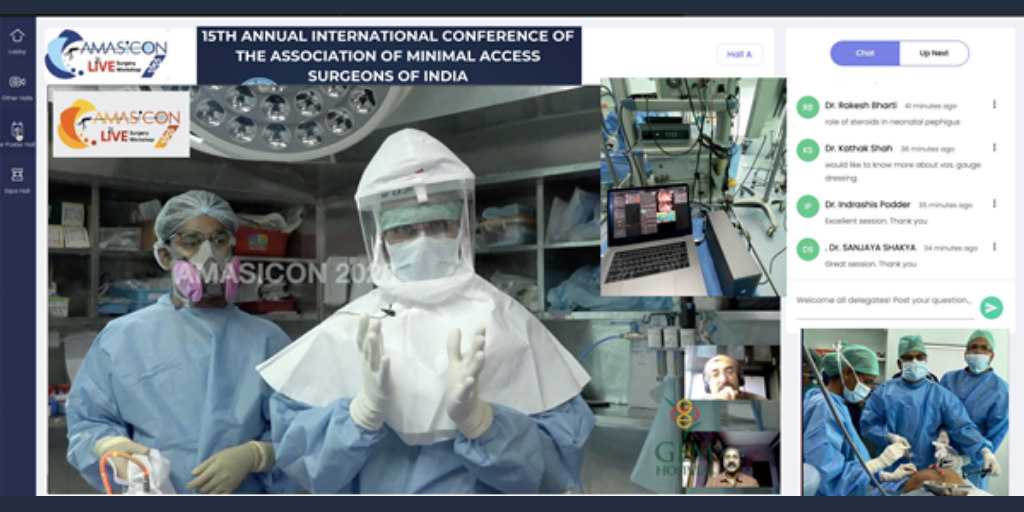AWS Public Sector Blog
Category: Healthcare
Coming soon: AWS launching new Region in Spain by mid-2022
Located in Aragon, the new AWS Europe (Spain) Region will consist of three Availability Zones, giving organizations of all sizes—from startups to enterprises and public sector—access to local infrastructure, while meeting the highest security standards, regulations and data protection, reducing latency, increasing security, improving scalability, and boosting innovation and digital transformation in Spain.
NYU Langone Center increases MRI accessibility through cooperative data sharing and research
About 40 million MRI scans are performed in the United States every year. MRIs are a valuable part of diagnostic plans, but as they exist today, they may not always be a part of a patient’s care plan. A research team at the New York University (NYU) Langone Center set out to make MRIs more accessible for more patients by using artificial intelligence (AI), machine learning (ML), and the power of cooperative open data sharing.
COVID-19 vaccination scheduling: Scaling REDCap with AWS
Vaccine demand brought unprecedented load to the launch of Texas A&M Health’s vaccination sign-up site. The Texas A&M Health team used AWS to develop a solution to reduce outages and errors, and scale REDCap to get vaccines to Texans.
Beth Israel Lahey Health builds COVID-19 vaccine deployment system in two weeks with AWS
13 hospitals, over 100 primary care and ambulatory sites, over 30,000 staff members — and only two weeks to get them all prioritized and scheduled for vaccination in time for when vaccine doses became available. Discover how Beth Israel Lahey Health built and launched a COVID-19 vaccine deployment solution for healthcare workers in just two weeks with Amazon Web Services.
Mediknit delivers high-def global surgery workshop with AWS Media Services
Mediknit is an online academy marketplace for healthcare professionals to access on-demand, need-based upskilling programs and professional development programs created by verified educators across the globe. In collaboration with GEM Institute of Laparoscopy and Robotic Surgery, Mediknit provides live surgery streams via the GEM Televersity portal for the continuing medical education (CME) needs of surgeons. With AWS, Mediknit scaled to meet the demand to provide this streaming solution across the globe.
Improving pandemic response, citizen services, and assessing beehive health: The latest from AWS Cloud Innovation Centers
Cloud Innovation Centers (CICs) powered by Amazon Web Services (AWS) aim to empower public sector organizations to quickly create and test new ideas using Amazon’s innovation methodology. With the CIC program, students and researchers, along with AWS teams, focus on solving real-life societal challenges facing the public sector. Learn more about some of the digital solutions on challenges the CIC team published over the last quarter such as working to prevent opioid overdose, discovering new coronaviruses, and using machine learning to monitor beehive health.
Supporting people with hearing loss through cloud-enabled solutions
In 2021, one in six Australians—almost four million people—have hearing loss, ranging from mild to profound. The statistic is part of the larger global picture reported by the World Health Organization (WHO) that approximately 466 million people live with hearing loss; of these, 34 million are children. In addition, 1.1 billion young people are at risk of hearing loss due to exposure to noise in recreational settings and through personal audio devices. AWS offers services that will help organizations build end-to-end solutions with accessibility in mind and improve day-to-day activities such as social interactions, clinical consultations, live media, and public service announcements.
BrainGuide uses cloud technology to empower people with knowledge and resources for brain health
Alzheimer’s, a progressive brain disease that gradually deteriorates memories and thinking skills, is one of the leading causes of death in the United States, according to nonprofit UsAgainstAlzheimer’s (UsA2). To help address the immense need for brain health information and insights, UsA2 recently launched BrainGuide working with AWS and Biogen. BrainGuide is a first-of-its-kind platform that empowers people with knowledge and resources to take the best next steps in managing their own or a loved one’s brain health.
The strategic power of data, enabled by AWS Partner data-led migrations
Data has become a strategic asset. With the right tools, data becomes predictive and makes us agile. Using data-led migrations and advanced data analytics solutions, AWS Partners create repeatable and scalable solutions that provide increased operational efficiencies and profitability for companies, agencies, and governments. The three steps to gaining the full value of data are: migrate data to the cloud data lake, set up an analytics engine, and leverage artificial intelligence (AI) technologies, including ML and deep learning.
Accelerating COVID-19 vaccine rollout with Zocdoc on AWS
With more than 1,400 different systems that healthcare providers use to run their scheduling, and millions of Chicago residents seeking a vaccine, a unified, citywide rollout for COVID-19 vaccinations is a challenge. Like many municipalities, early in the pandemic, the city of Chicago preferred to offer its residents a centralized find-and-book appointment system for COVID-19 testing, but other priorities and operational challenges prevented this. However, for vaccines, the team leading the city’s COVID-19 vaccination response was determined to deliver a more seamless experience for residents. The city used the Zocdoc Vaccine Scheduler built on AWS.









